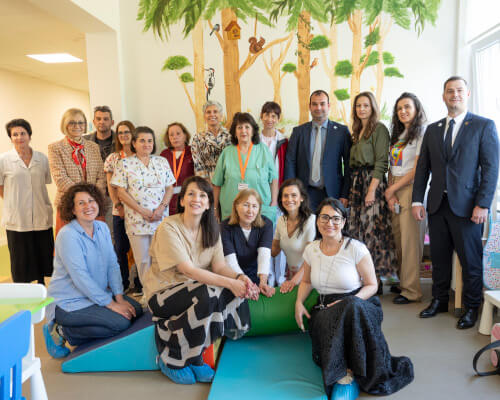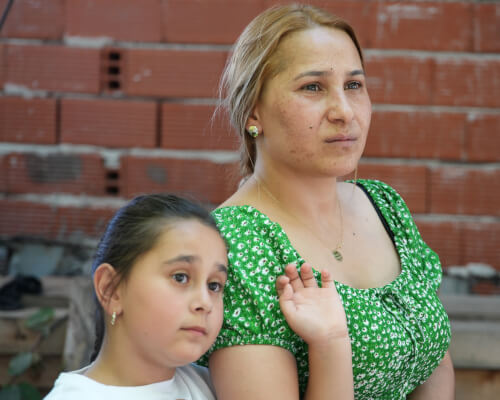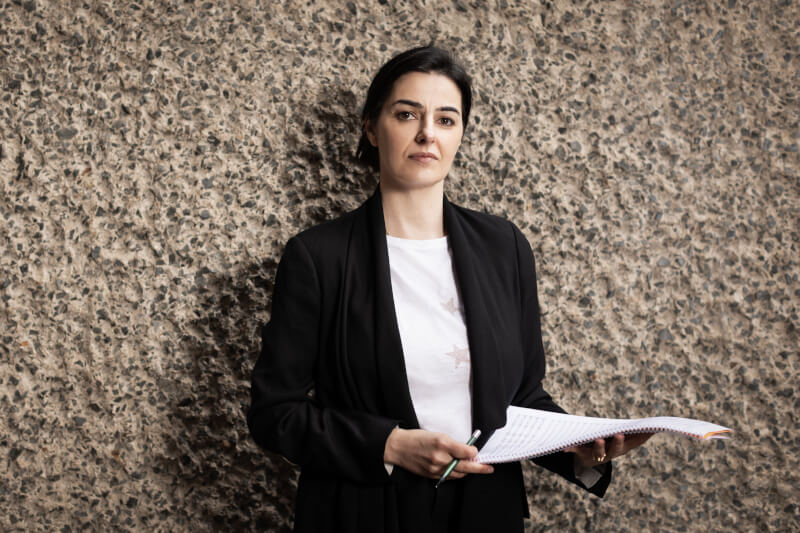
Theirs was quite a journey.
Crafted to celebrate the triumph of a new religion in the fourth century CE, badly damaged twice over the next 200 years, and eventually abandoned, they lay buried under layers of rubble and soil for fourteen centuries. They were discovered again by chance in the 1980s and, after four decades of uncertainty due to regime changes and lack of money, are the centerpiece of a state-of-the-art museum in the historic heart of Bulgaria’s second city, Plovdiv.
Bulgarian-British composer and Plovdiv native Dobrinka Tabakova has set their dramatic journey to music. Her piano quintet Stone Trail follows the long return from oblivion of the 1,700-year-old mosaics of the Bishop’s Basilica of Philippopolis, believed to be one of the first churches built after the legalization of Christianity in the Roman Empire in 313.
Ms. Tabakova’s piece not only conveys the Basilica’s grandness and importance in the history of early Christianity but also captures one of the most curious features of early Christian belief and of the Basilica’s stone floor—the depiction of Christians’ souls as birds.
Indeed, the Basilica’s mosaics feature hundreds of bright-feathered specimens using expressive body language to communicate with us through the centuries—a swaggering peacock, a mallard in search of food, a hen feeding her chick, a drake defending its territory.
Stone Trail’s global premiere took place at the Bishop’s Basilica this summer as part of Off the Beaten Path chamber music festival, while listeners worldwide can tune in to its YouTube premiere at 7 pm Eastern European Time on Friday, December 22. (Scroll down for the promotional trailer.)
The piece was commissioned by Off the Beaten Path with support from the Ernst von Siemens Music Foundation.
Ms. Tabakova is no stranger to composing music on epic themes. She composed a cantata to commemorate the 400th anniversary of Shakespeare’s death, an anthem to celebrate the Golden Jubilee of Queen Elizabeth II, and compositions inspired by composer Franz Schubert, The High Line in New York, Bulgaria’s mysterious Rhodope Mountains, and many others. A composer-in-residence with BBC Concert Orchestra, she is one of the notable composers of her generation whose music is “riveting, piercingly beautiful and frequently radiant,” according to the HuffPost Culture & Arts.
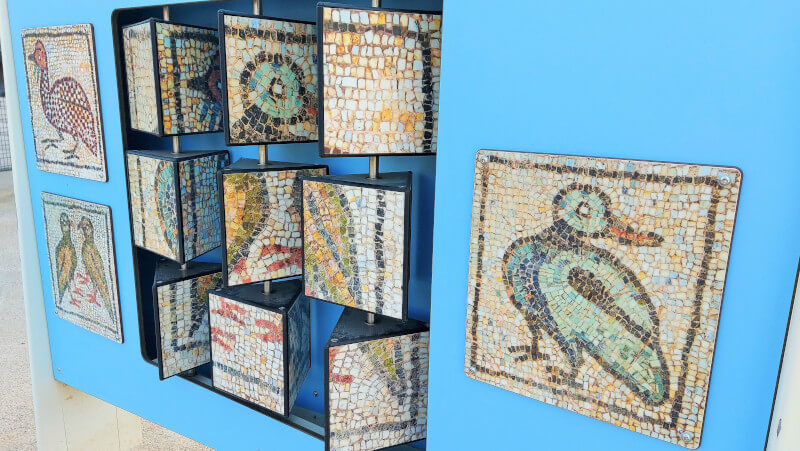
Although she has lived in London since the age of 11, Ms. Tabakova’s music is strongly influenced by her Bulgarian roots. Her most recent work, written in collaboration with six other Eastern European composers, is a requiem in memory of the victims of the region’s communist regimes. The requiem premiered on December 16, 2023, in the Romanian city of Timisoara, this year’s European Capital of Culture.
Among the many distinctions her work has garnered, Ms. Tabakova’s debut portrait disc String Paths received a Grammy nomination in 2014.
We spoke with Ms. Tabakova about Stone Trail, about her influences, and about her increasing involvement in Bulgaria such as her partnership with Off the Beaten Path chamber music festival in the picturesque village of Kovachevitsa.
America for Bulgaria Foundation: What inspired you to write Stone Trail?
Dobrinka Tabakova: For me, one of the most interesting and enjoyable parts, apart from the writing itself, is the diving into the information, into subjects that are enriching. We are lifelong learners. To prepare for a composition on a given topic, I always reach out to people who have an in-depth understanding of the subject.
What really sparked my interest in the Basilica was actually my father, who is a medical physicist with an incredibly deep passion for early Christian culture and symbolism in these mosaics. Thanks to him, the place started to come alive for me. [Dobrinka Tabakova’s father, Professor Slavik Tabakov, is the author of the book Symbols in Christian Mosaics: A Visual Guidebook, ed.]
In ancient Plovdiv, there was a strong Christian community only a dozen years after the religion was legalized in the Roman Empire. Before that, Christians were persecuted and even murdered. Imagine the strength, will, and faith of the people who lived in those lands.
What’s also important to me is how these mosaics, this atmosphere, inspired an aesthetic and taught ordinary citizens how to appreciate the beauty, the symmetry, all these layers that elevate them above everyday concerns. To me, that’s what art is about, what culture is about—elevating human beings to the next level.
These tesserae have been there since the 4th century and have not crumbled, and what inspired me are the messages they have preserved for us to this day. If you invest even a little bit of your time to learn about them, they can ignite something very powerful in you.
There is a lot of numerology in Stone Trail: the number 3 signifies the Holy Trinity; 4 is a symbol of the earthly; 6 symbolizes the world created in six days; 8 stands for the resurrection. These numbers form patterns, which are woven musically into the work.
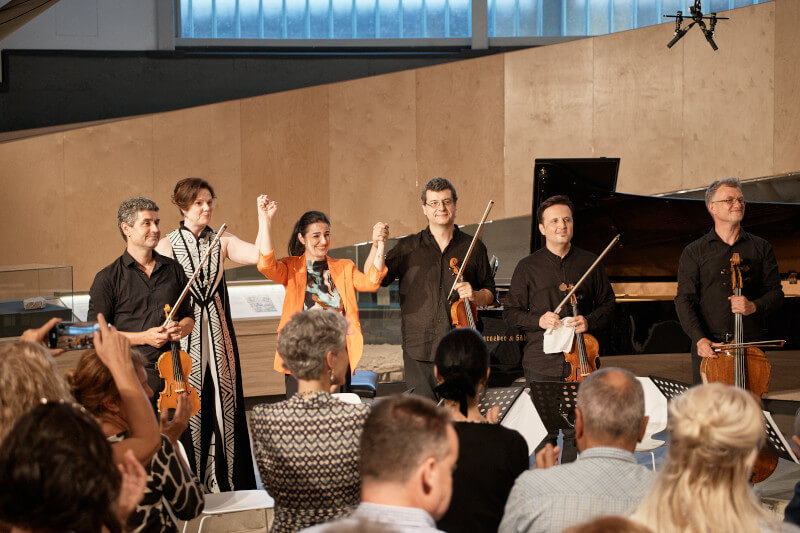
The Bishop’s Basilica of Philippopolis is a treasure that Bulgaria will yet begin to appreciate. I believe that just as people go on pilgrimages along the Camino de Santiago de Compostela, so they will in Bulgaria. I know several people in England who organize tours to visit these holy places in Bulgaria.
ABF: You grew up in cosmopolitan London and are a global artist, but in recent years you increasingly gravitate toward your roots, both in your work and quite literally with your involvement with Off the Beaten Path chamber music festival in Kovachevitsa. What is the force that draws you back to Bulgaria?
D.T.: I think that this slight nostalgia felt by everyone who has left their homeland behind is very strong in me. I have works called Rhodopa, Thrace, and The Bells of My Home Town, inspired by my hometown, Plovdiv. But what Off the Beaten Path festival—what Lora and Georgi [pianist Lora Tchekoratova and violinist Georgi Valchev, co-founders of Off the Beaten Path, ed.]—did, in particular, is incredible… They say that Bulgarians don’t really stick together, but what I’ve seen from them and their circle of musicians in New York is so inspiring. They overturn all these stereotypes. Besides a remarkable musician, Lora is a true visionary. She inspires people to give something very good of themselves.
I think that everyone who knows Bulgaria would want to live there, and if the state made it a little easier, I think that people would flock back to Bulgaria. But let’s start with small steps.
My family and I own a very beautiful house in the center of Plovdiv—a nest in need of plenty of love and care right now. So there are big renovations coming up next year, and one day I hope to be able to host some events for the public there, such as concerts.
ABF: The world premiere of Stone Trail took place this summer at the Bishop’s Basilica of Philippopolis. This is the first time a work of yours premieres in Bulgaria. How does it feel to listen to your music in the place where your earthly journey began?
D.T.: I was quite emotional. We had an interview to promote Stone Trail, and I was pretty moved so I had to take valerian to calm down. [laughs]
Next summer, the piece will be performed at Off the Beaten Path festival in Dobrinishte. After Dobrinishte, we will do a studio recording of Stone Trail and other chamber works of mine for the future release of an album.
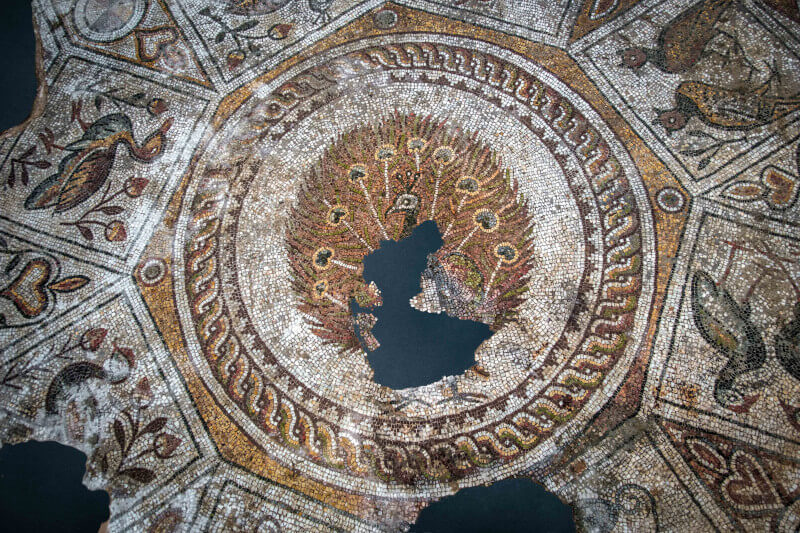
ABF: How do you go about composing a piece of music? Please take us behind the scenes of the music composition process.
D.T.: I immerse myself in the subject and read everything I can get my hands on. Then, when it comes to composing, perhaps most important is structure. It’s a kind of architecture of time—how ideas flow into each other, where you want a dip in energy and where you want a stronger element, something more dynamic or more powerful. I also sketch out ideas and decide where in this structure they will fit best. From there I decide on tone color and musical instrument combinations—whether I want more piano or more string instruments—and how my ideas will be woven into the rhythm.
As a kind of godmother to Off the Beaten Path festival, I have intended to write for these wonderful musicians from the very beginning. Besides the Basilica mosaics, Lora, Georgi, Nikola, and the rest of the festival musicians and organizers are my inspiration for Stone Trail.
I have a lot of literature that I used to prepare for the work, but just as important were my conversations with my dad at home.
The birds of the Bishop’s Basilica of Philippopolis have a deep meaning. They depict paradise, the Garden of Eden. There are many water birds, which symbolize the souls of Christians that are purified by passing through water. And that magnificent peacock mosaic at the entrance is a symbol of immortality. At one time, it was believed that the flesh of the peacock doesn’t decay after death, and the “eyes” on the peacock’s tail feathers represent the eyes of God. In one place, there is a bird in a cage. This symbolizes someone who may have committed a sin, and in some other churches, the door of the mosaic cage is left slightly ajar, so we always have the chance to free ourselves from this sin. These images have an educational value as well.
ABF: You have spent most of your life in England, but your birthplace seems to be an enormous source of inspiration for you. Is this an accurate observation?
D.T.: I think so. It can’t be otherwise. Whether an artist consciously seeks their roots is another matter. I don’t consciously decide on using irregular time signatures; I am naturally attracted to these rhythms and these sounds. The interesting thing is that, in Bulgaria, they say that they hear a lot of English sound in my music, and, in England, they hear Bulgarian influences. It is good when one can be of several places at once and draw material from different “wells” of inspiration.
The mosaics of the Bishop’s Basilica were brought back to life through a public-private partnership between the America for Bulgaria Foundation, Plovdiv Municipality, and the Bulgarian Ministry of Culture as well as the support of dozens of businesses and countless volunteers.
